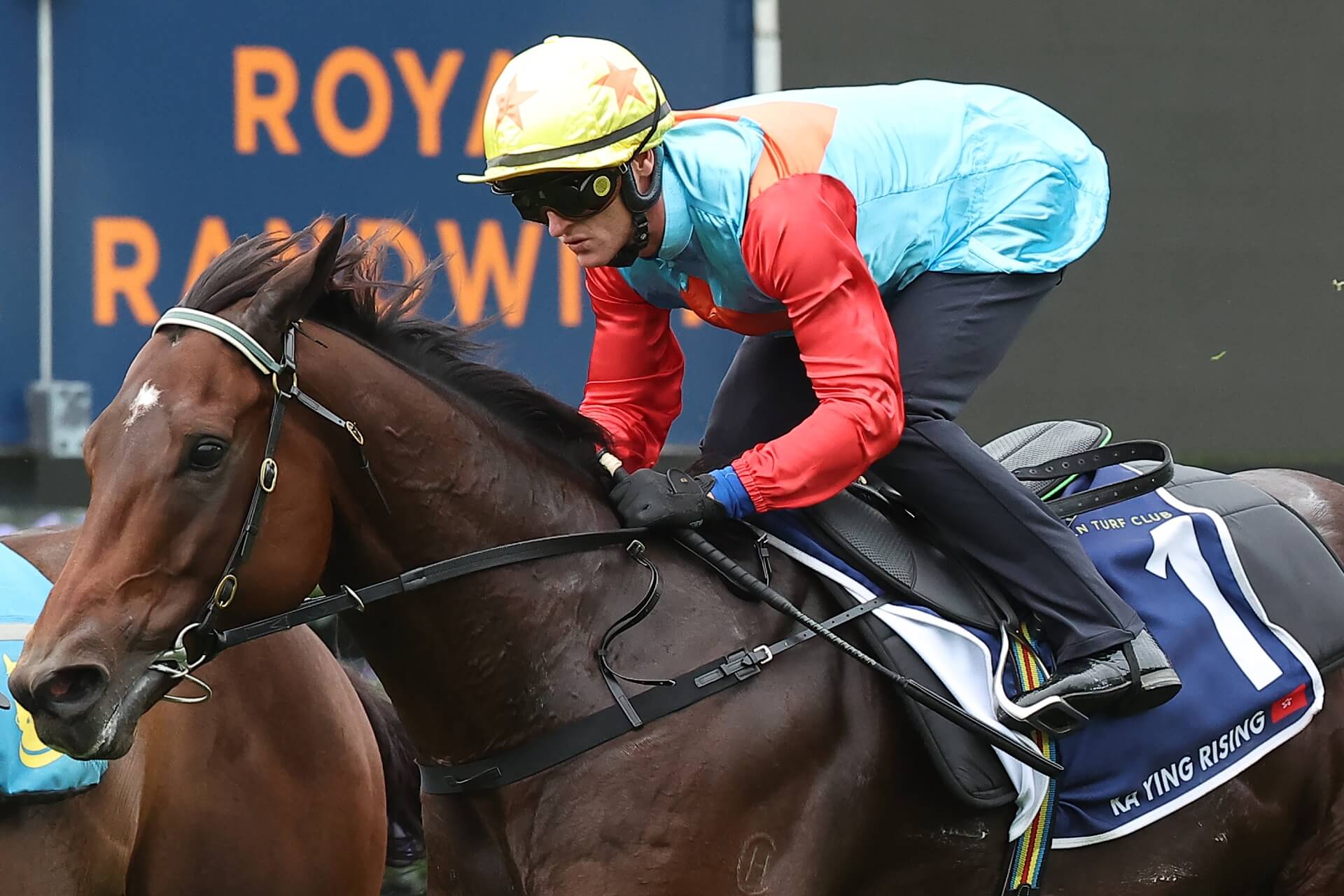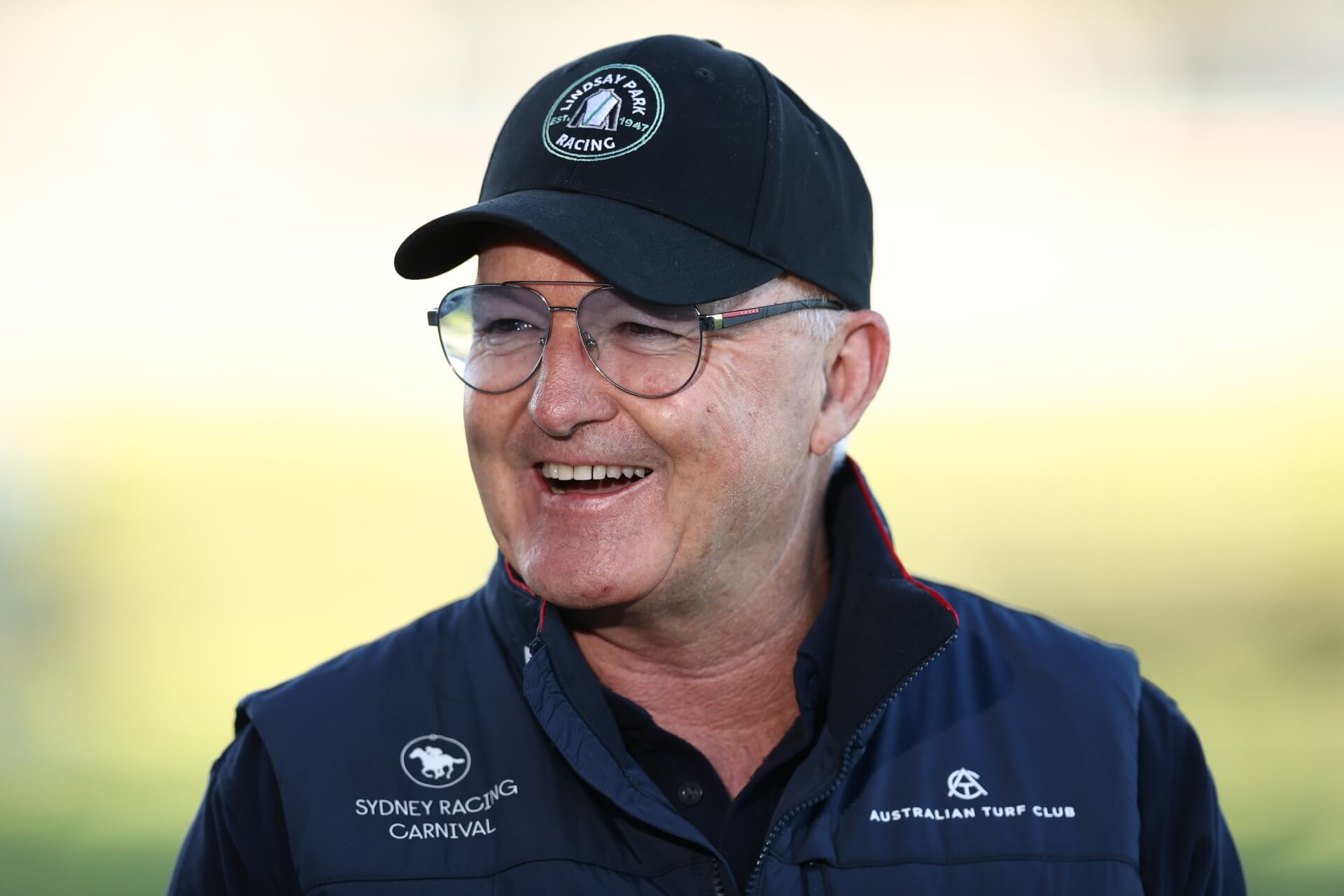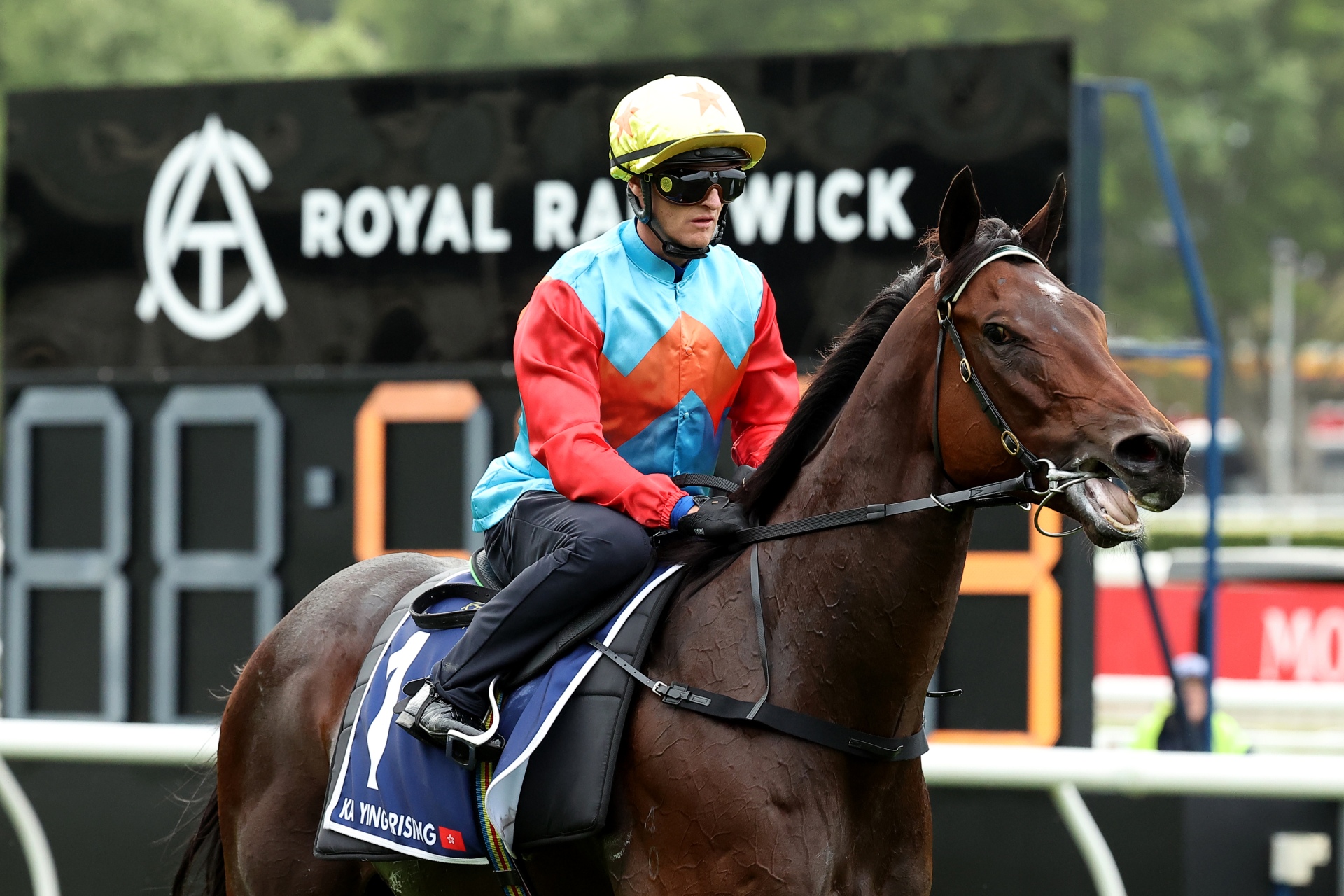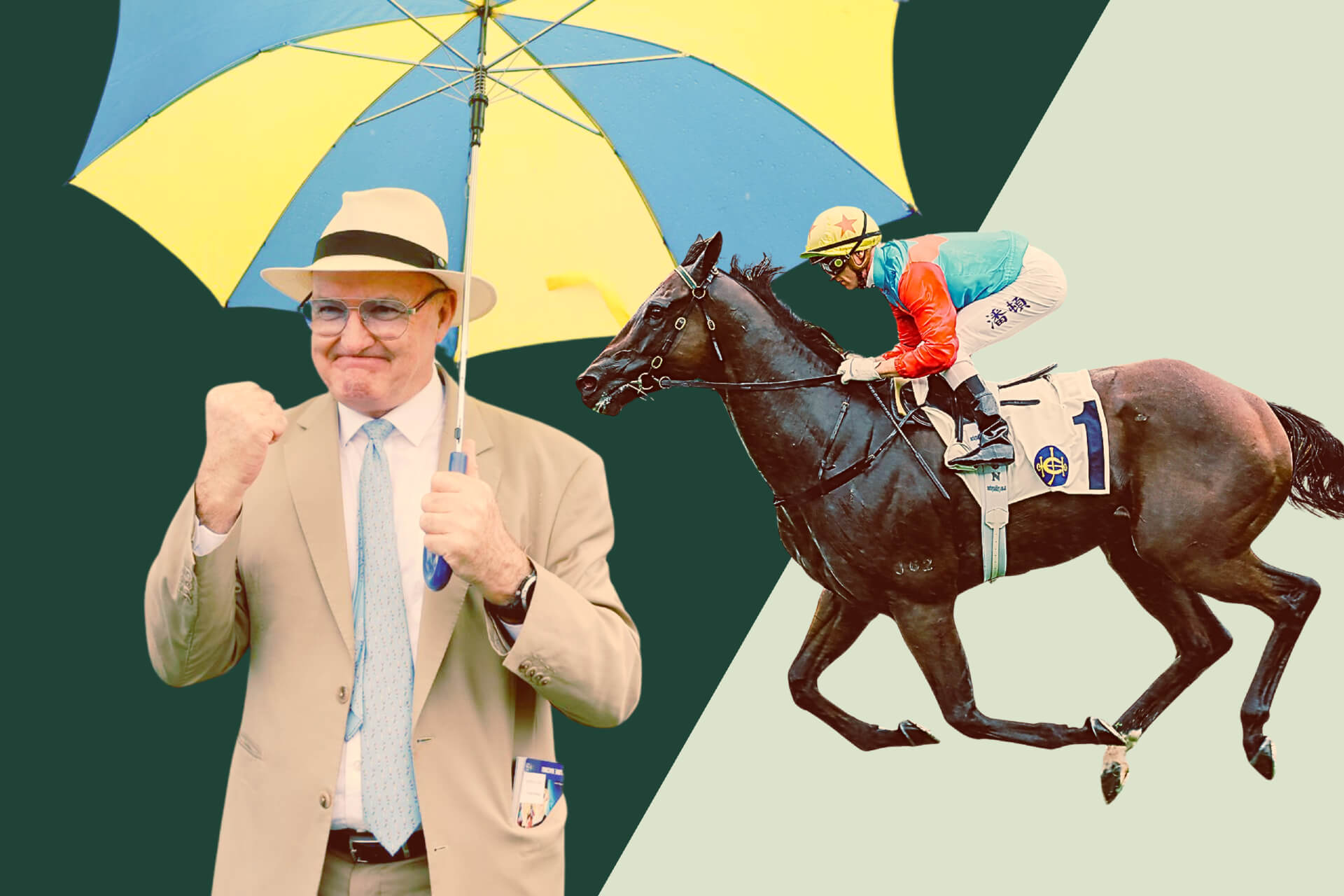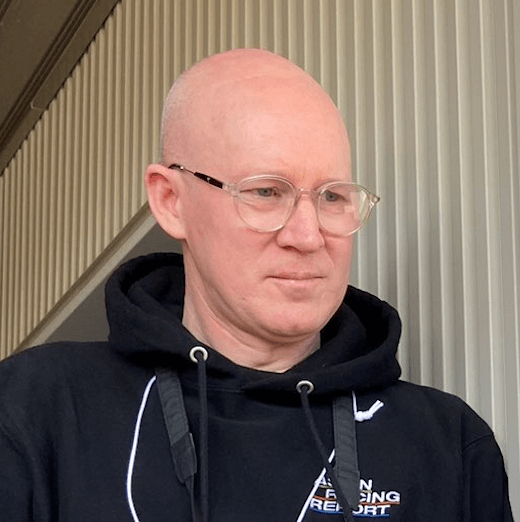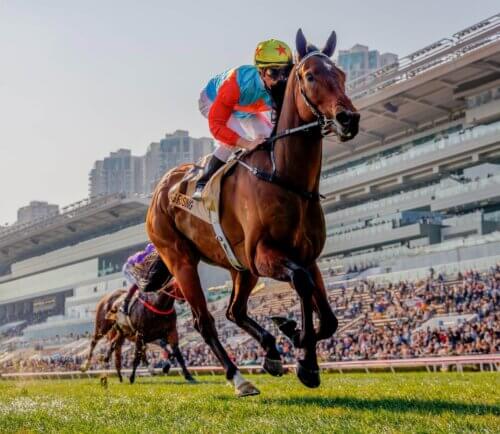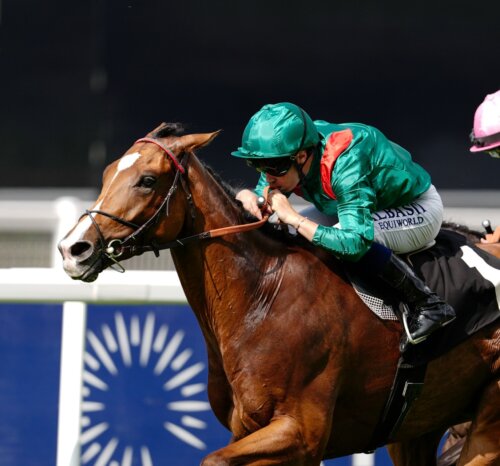Zac Purton believes Ka Ying Rising needs to have “a big 10 days” from his recent barrier trial into the G1 The Everest at Royal Randwick after the much-analysed 1000m hit-out on Tuesday morning raised questions about whether the Hong Kong raider is in form enough to justify hot favouritism for the AU$20 million sprint.
Reflecting two days on, Hong Kong’s eight-time champion jockey was not too concerned about the way Ka Ying Rising went about the trial itself – from barrier to line – in which the horse wore a regular trackwork saddle and for which Purton said he stripped lean given that he was to ride at 121lb the following evening at Happy Valley.
But he did emphasise the mitigating factors of Ka Ying Rising being “the heaviest he’s ever been” after just one race in six months and time in travel quarantine, plus ground conditions, unfamiliar environment, and pre-trial anxiety that meant the gelding did not dazzle the expectant spectators in running home an otherwise smooth and comfortable third.
It’s safe to say Purton believes he’s on the best horse, but he’s not expecting the kind of dominant performance in The Everest that Ka Ying Rising has delivered so often at Sha Tin. Instead, there’s a sense that if he’s going to win the world’s richest sprint race, the world’s top-rated sprinter is going to have to tough it out like another Hong Kong champion, Romantic Warrior, did when winning the G1 Cox Plate narrowly in 2023.
“That’s probably what’s going to happen,” Purton told Idol Horse. “He clearly wasn’t at his best in the barrier trial: he’s going to need to be better than that in the race.
“He’s certainly needed to have the trial and have the hit-out. He’s going to need another gallop to bring him on even more; he got a little bit lost around there, the ground was a little bit soft and then pre-trial he was a mess in the tie-up stalls when I got there. Everyone was hoping to see something special in the trial and we’re hoping now that he can produce something that’s good enough to be competitive.
“Against that, I know how good he is on his day when he’s right,” he continued. “I’ve just got to hope he’s going to be somewhere near that on race day. I think people want to see that as well, they want to see him turn up and be as competitive as he can be and run as well as he can be.”
Purton at least is “not concerned” about the Randwick ground having too much ease come the big race on October 18, despite his own view that the barrier trial surface was softer than his mount would have liked it, and, with a forecast for dry weather, the probability that officials will opt to irrigate the track to some extent.
“The weather that they have, it’s going to be a Good 4,” Purton said. “I think at Randwick they’re pretty good at managing the track so I don’t think they’re going to go overboard (with watering) in any way.
“They’re trying to say it was a Good 4 that we trialled on the other day but it was softer than that … I think the track was a bit softer than what they thought. But I think it’ll be a Good 4 on race day and that’ll be fine, that’s enough for us.”
Purton has spoken in recent weeks of his fears about how Ka Ying Rising will respond to the race day preliminaries away from Sha Tin where he has contested all 16 of his races for 14 wins, the last 13 without loss. The barrier trial did little to ease those concerns.
“You could tell he’d been sweating a lot (in the tie-up stall),” he said. “He was agitated, he couldn’t stand in his stall, they had to walk him around; he was difficult to saddle and by the time we got to the parade ring the sweat was pouring out between the back of his legs and you could just tell the whole occasion got to him.
“That’s disappointing,” he admitted, “because that’s only a barrier trial. Randwick is going to be ‘on steroids’ compared to that on race day, so the big concern now is how he’s going to handle himself pre-race.
“But you go down there and things are different for the horse and it’s how he can cope with that: he’s used to certain routines, and when you travel it’s not easy and that’s why a lot of people don’t travel.”
Ka Ying Rising’s trial was watched by about 1,000 people on-track and with all the above in mind, it’s easy to see why it has since been picked apart by pundits, racing professionals, punters and fans on podcasts, in print and on social media threads. ‘Underwhelming’ has been the go-to reaction.
“That’s always the case with Australia, we’ve got a bit of a tall poppy syndrome down there,” Purton said of his home country. “They like to pick everything apart and they’re parochial: we’re coming from Hong Kong and they want to support their local horses, which is fine, I’d do the same.
“And then Ka Ying Rising has arrived with a big reputation so they’re expecting something special, and when he didn’t do that, of course it opens the door to a bit of criticism and everyone is entitled to their own opinion and that’s fine, that’s what racing is about.”
As for The Everest itself a week Saturday, Purton knows the experience of trialling at the course can only have been beneficial to Ka Ying Rising. His usual flat-track stomping ground requires a fast break and sprint from the 1200m before it begins to turn from about 850m until straightening up for a 430m dash home. Randwick, although also right-handed, is different with a chute start and a dog-leg, then a turn and a slight rise upon straightening into a flat run home.
“It was good that he went there, he should know where he’s going now and on race day, when there’s a crowd and we’re closer to the fence, hopefully that switches him on.”
And the rider has no intention of doing anything out of the ordinary in the way he will ride Ka Ying Rising in the race.
“I’ll just ride him like I always do: however he begins and however I feel like he’s going, I’ll ride him accordingly,” he said. “A couple of horses in there might want to go quick, so if they want to go we take a sit, if they don’t go, we’ll lead. The barriers will sort of dictate the make-up of the race to a certain degree as well, it’s just about allowing him to begin as well as he wants and finding the spot in the field wherever that is.
“We’ve got about 10 days between the trial and the race just to fine-tune him enough to give ourselves a chance,” Purton added. ∎

